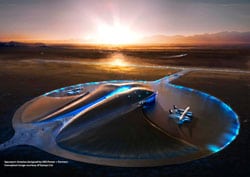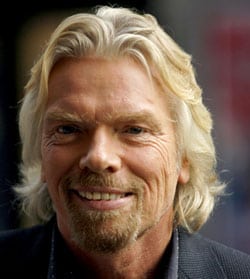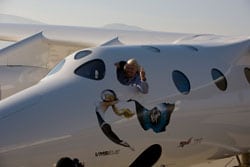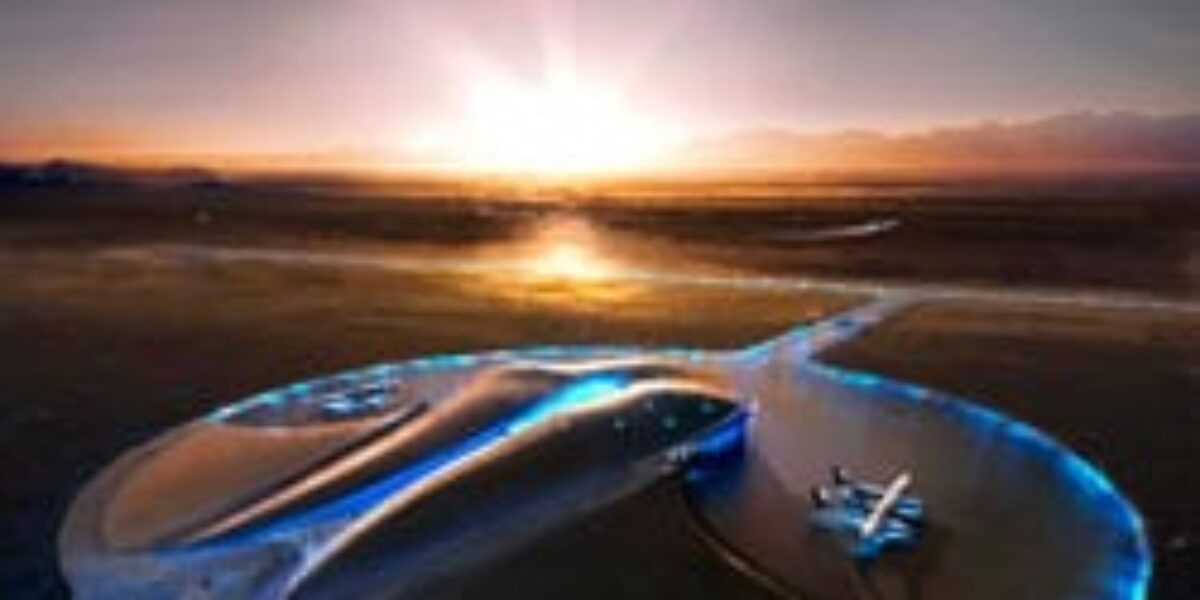Virgin Galactic

You can fly transatlantic with them and cross the UK on one of their trains. You can pay for the journeys using one of their credit cards and carry out the transaction on their broadband and mobile phone services. You can now even have your annual health checkups in one of their specialised clinics. The group is Virgin and their founder, Sir Richard Branson, is as recognisable as their red logo and as integral to their public identity.
Richard Charles Nicholas Branson was born in Blackheath, South London in 1950. Despite having dyslexia and failing to achieve any academic success, the young Branson was charismatic and skilled in his ability to connect with people. Branson’s long and successful career began with the creation of a student magazine at the age of 16. A mail order record business followed, which snowballed into the opening of a record shop in Oxford Street, London. In 1972, the business expanded to include a recording studio in Oxfordshire, where the first Virgin artist, Mike Oldfield, recorded the classic album ‘Tubular Bells’. In 2010, the Sunday Times Rich List placed him as the 18th Wealthiest man, holding an estimated fortune of £950 million.
Strangely, it never seems to be about the money – “My interest in life comes from setting myself huge, apparently unachievable challenges and trying to rise above them," Branson once said, "…from the perspective of wanting to live life to the full, I felt that I had to attempt it." In this spirit, Virgin Atlantic Airways was formed in 1984, with Virgin Blue, the low-cost Australian airline, following in 2000. In 1993, Virgin Trains won the franchises for the former Intercity West Coast and Cross-Country sectors of British Rail and in 1999 Virgin Mobile was launched.

Branson has often been tagged a "transformational leader", to use the management lexicon, with his maverick strategies and stress on the Virgin Group as an organisation driven on informality and information. He is often cited as believing the organisation to be one that is bottom-heavy rather than strangled by top-level management. For one of wealthiest men in the world, his ethos is surprising simple – "Ridiculous yachts, private planes and big limousines won’t make people enjoy life more, and it sends out terrible messages to the people who work for them. It would be so much better if that money was spent in Africa – and it’s about getting a balance".
This honesty and straightforwardness comes through again in Branson’s biography, when he details the sale of the Virgin record label to EMI in 1992, a sale which raised £500 million and was necessary to keep his airline company afloat. He said he wept when the sale was completed, since the record business had been the birth of the Virgin Empire. Always one to see opportunity, however, he later formed V2 Records to re-enter the music business.
There are some surprising ventures in Virgin’s extensive portfolio: Virgin Comics and Animation, an entertainment company focused on creating new stories and characters for a global audience; Virgin Health Bank, which offers parents-to-be the opportunity of storing the blood stem cells from their baby’s umbilical cord in private and public stem cell banks; and more recently, the Ninety Acres Culinary Center in New Jersey. This complex is the first phase of a $90 million Virgin Spa and hosts a restaurant run by chef David Felton, a cooking school, wine school and a working farm. In such an eclectic company, space travel doesn’t seem out of place.
It comes as no surprise that Virgin already have a well-developed project for commercial space tourism. In 2004, Branson announced the signing of a deal under which a new space flight company, Virgin Galactic, will license the technology behind SpaceShipOne, which was financed by Microsoft co-founder Paul Allen and designed by legendary American aeronautical engineer and visionary Burt Rutan. Branson’s imagination was first sparked in 1969 while watching the moon landings on TV with his family. Determined to experience the wonders of space for himself, Branson’s personal dream of space flight has driven the Virgin Galactic mission over the last decade. This drive and perseverance paid off in December last year with the unveiling of the two vehicles that will help realise that dream.

In layman’s terms, the launch aircraft, christened ‘Virgin Mothership Eve’ after Branson’s own mother, will carry the spaceship high into the atmosphere where the ship with its passengers can safely detach and the engines ignite, carrying it beyond the Earth. The spaceships can accommodate six passengers per flight, along with the two pilots. Large windows to the side of the seats and overhead will provide passengers with astonishing views of the earth. For the more adventurous, there is enough room to allow for an out-of-seat zero gravity experience. When the project goes live, Galactic aims to take paying passengers into suborbital space, making flights available for around $200,000 per seat.
This space exploration project may seem like a boy’s dream, and it most likely is for Branson, but the fact remains that the Virgin Group are also heavily committed to environmental issues. In 2006, Branson pledged to invest the profits of Virgin Atlantic and Virgin Trains into research for environmentally friendly fuels, an investment that is now estimated to be worth $3 billion. The Virgin Earth Challenge scheme will award $25 million to the individual or group who are able to demonstrate a commercially viable design which will result in the net removal of anthropogenic, atmospheric greenhouse gases each year for at least ten years without countervailing harmful effects. Branson’s next venture with the Virgin group is Virgin Fuels, which is set to respond to global warming and exploit the recent spike in fuel costs by offering a revolutionary, cheaper fuel for automobiles and, in the near future, aircraft.
It doesn’t seem like too great a leap to imagine a combination of these two Virgin ventures – cheaper, environmentally friendly fuel for commercial spaceships, providing sightseeing trips to the stars that we can all afford.


